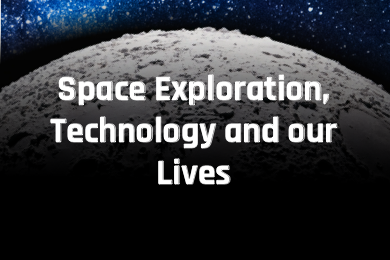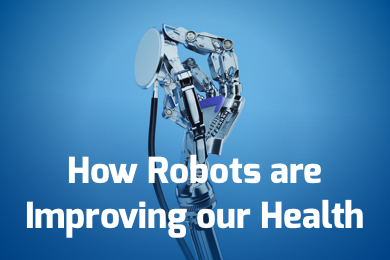July 29, 2025
Preserving biodiversity and protecting the planet are twin tasks that are interrelated. Carbon emissions, for example, continue to drive increases in the Earth’s average temperature. Healthy ecosystems are crucial allies because forests, wetlands and oceans absorb around half of our carbon dioxide emissions and shield communities from floods and heat waves. But pollution can disrupt the delicate balance in some environments.
Earlier this year, 2023 IEEE President Saifur Rahman visited a UNESCO-designated nature reserve in the mountainous Shennongjia Forest in Hubei Province in China. He got a first-hand look at the impact that power systems can have on wildlife. The reserve is home to the golden snub-nosed monkey, which is a protected species. Labs and living quarters for researchers were originally powered by diesel systems, but the noise and pollution drove monkeys to higher elevations, where the food and flora available to them weren’t ideal.
A few years ago, a power company provided solar power with battery storage to power the research facility and housing for researchers, Rahman said. “This technology has allowed the monkeys to come down to lower elevations where sites are more to their liking.”
In this recent interview, Rahman discusses the interplay between a sustainable planet and biodiversity and the ethical responsibility technologists have when developing and deploying technologies that may impact ecosystems.
How has your background in electrical engineering and power systems shaped your understanding of the relationship between biodiversity and a sustainable planet?
My PhD thesis work at Virginia Tech was on nuclear power plant operations, a zero-emission power source. I also conduct research on solar and wind power integration into the electric power grid, focusing on reducing CO2 emissions from the electric power sector. CO2 emissions from fossil-fuel power plants pose significant threats to ecosystems, species interactions and the distribution of both plant and animal species.
Why is biodiversity important in the context of a more sustainable planet, and what do engineers and technologists often overlook about this relationship?
Increased CO2 can favor certain plant species over others, potentially leading to shifts in species composition, which can affect the animals that rely on those plants for food and habitat. Addressing CO2 emissions is therefore crucial for preserving biodiversity and maintaining the ecological balance necessary for healthy ecosystems.
Biodiversity is essential for the health and functionality of ecosystems, which in turn influences their ability to mitigate and adapt to the impacts of environmental changes. Maintaining and promoting biodiversity can enhance resilience, improve carbon sequestration and ensure the provision of vital ecosystem services, making it a key component of any effective response.
Engineers and technologists often overlook the interactions among various biological functions in nature that help sustain a healthy ecosystem. This results in an unidirectional approach where technology does what it is supposed to do, but the ecosystem is disturbed, causing unintended consequences.
What role can emerging technologies play in monitoring and preserving biodiversity?
If you think back to the example in the Shennongjia Forest, having reliable and emissions-free electricity allowed researchers to offer “around-the-clock” monitoring and protection. But with a reliable, more advanced power supply, they can also use more advanced research equipment, such as conservation monitoring instruments and environmental monitors. This has brought great convenience to the research team in this area.
By integrating technologies into conservation strategies, we can enhance our understanding of ecosystems, improve management practices and ultimately contribute to the protection of global biodiversity in the face of numerous environmental challenges.
In your view, what ethical responsibilities do engineers and computer scientists have when developing technologies that may impact ecosystems?
The ethical responsibilities of engineers and computer scientists when developing technologies that impact the planet are vital to ensuring that technological progress aligns with environmental sustainability and ecological integrity. Fostering a culture of ethical consideration and social responsibility by respecting cultural values of impacted communities can enhance interdisciplinary collaboration among these professionals. Simultaneously, it is important to understand that participation from local residents is essential for advancing technologies that benefit both society and the natural world.
Looking forward, what can IEEE do to elevate biodiversity in global conversations?
Stay involved. For example, the IEEE Smart Village Program has promoted technologies like solar photovoltaics and other projects in many remote parts of the world. These initiatives can provide best practices for biodiversity projects, similar to the creation of the microgrid for researchers in Shennongjia Forest in China.Interested in learning more? Visit IEEE Technology for a Sustainable Climate to discover how IEEE and its members are preserving biodiversity and explore additional resources.
ABOUT OUR AUTHOR
Saifur Rahman is the 2023 IEEE President and CEO, an IEEE Life Fellow, and the founding director of the Advanced Research Institute at Virginia Tech, where he is a professor of electrical engineering. Over the years, he has served IEEE in a number of capacities, including as president of the IEEE Power and Energy Society, and as the founding editor of IEEE Electrification Magazine and IEEE Transactions on Sustainable Energy.





 Meaningful Momentum or Running in Place?
Meaningful Momentum or Running in Place? AI Through Our Ages
AI Through Our Ages Liquid Infrastructure: Our Planet's Most Precious Resource
Liquid Infrastructure: Our Planet's Most Precious Resource The Impact of Technology in 2025
The Impact of Technology in 2025 Quantum and AI: Safeguards or Threats to Cybersecurity?
Quantum and AI: Safeguards or Threats to Cybersecurity? Why AI Can't Live Without Us
Why AI Can't Live Without Us Bits, Bytes, Buildings and Bridges: Digital-Driven Infrastructure
Bits, Bytes, Buildings and Bridges: Digital-Driven Infrastructure Impact of Technology in 2024
Impact of Technology in 2024 Emerging AI Cybersecurity Challenges and Solutions
Emerging AI Cybersecurity Challenges and Solutions The Skies are Unlimited
The Skies are Unlimited Smart Cities 2030: How Tech is Reshaping Urbanscapes
Smart Cities 2030: How Tech is Reshaping Urbanscapes Impact of Technology 2023
Impact of Technology 2023 Cybersecurity for Life-Changing Innovations
Cybersecurity for Life-Changing Innovations Smarter Wearables Healthier Life
Smarter Wearables Healthier Life Infrastructure In Motion
Infrastructure In Motion The Impact of Tech in 2022 and Beyond
The Impact of Tech in 2022 and Beyond Cybersecurity, Technology and Protecting Our World
Cybersecurity, Technology and Protecting Our World How Technology Helps us Understand Our Health and Wellness
How Technology Helps us Understand Our Health and Wellness The Resilience of Humanity
The Resilience of Humanity Harnessing and Sustaining our Natural Resources
Harnessing and Sustaining our Natural Resources Creating Healthy Spaces Through Technology
Creating Healthy Spaces Through Technology Exceptional Infrastructure Challenges, Technology and Humanity
Exceptional Infrastructure Challenges, Technology and Humanity The Global Impact of IEEE's 802 Standards
The Global Impact of IEEE's 802 Standards Scenes of our Cyber Lives: The Security Threats and Technology Solutions Protecting Us
Scenes of our Cyber Lives: The Security Threats and Technology Solutions Protecting Us How Millennial Parents are Embracing Health and Wellness Technologies for Their Generation Alpha Kids
How Millennial Parents are Embracing Health and Wellness Technologies for Their Generation Alpha Kids Space Exploration, Technology and Our Lives
Space Exploration, Technology and Our Lives Global Innovation and the Environment
Global Innovation and the Environment How Technology, Privacy and Security are Changing Each Other (And Us)
How Technology, Privacy and Security are Changing Each Other (And Us) Find us in booth 31506, LVCC South Hall 3 and experience the Technology Moon Walk
Find us in booth 31506, LVCC South Hall 3 and experience the Technology Moon Walk Virtual and Mixed Reality
Virtual and Mixed Reality How Robots are Improving our Health
How Robots are Improving our Health IEEE Experts and the Robots They are Teaching
IEEE Experts and the Robots They are Teaching See how millennial parents around the world see AI impacting the lives of their tech-infused offspring
See how millennial parents around the world see AI impacting the lives of their tech-infused offspring Take the journey from farm to table and learn how IoT will help us reach the rising demand for food production
Take the journey from farm to table and learn how IoT will help us reach the rising demand for food production Watch technical experts discuss the latest cyber threats
Watch technical experts discuss the latest cyber threats Explore how researchers, teachers, explorers, healthcare and medical professionals use immersive technologies
Explore how researchers, teachers, explorers, healthcare and medical professionals use immersive technologies Follow the timeline to see how Generation AI will be impacted by technology
Follow the timeline to see how Generation AI will be impacted by technology Learn how your IoT data can be used by experiencing a day in a connected life
Learn how your IoT data can be used by experiencing a day in a connected life Listen to technical experts discuss the biggest security threats today
Listen to technical experts discuss the biggest security threats today See how tech has influenced and evolved with the Games
See how tech has influenced and evolved with the Games Enter our virtual home to explore the IoT (Internet of Things) technologies
Enter our virtual home to explore the IoT (Internet of Things) technologies Explore an interactive map showcasing exciting innovations in robotics
Explore an interactive map showcasing exciting innovations in robotics Interactively explore A.I. in recent Hollywood movies
Interactively explore A.I. in recent Hollywood movies Get immersed in technologies that will improve patients' lives
Get immersed in technologies that will improve patients' lives